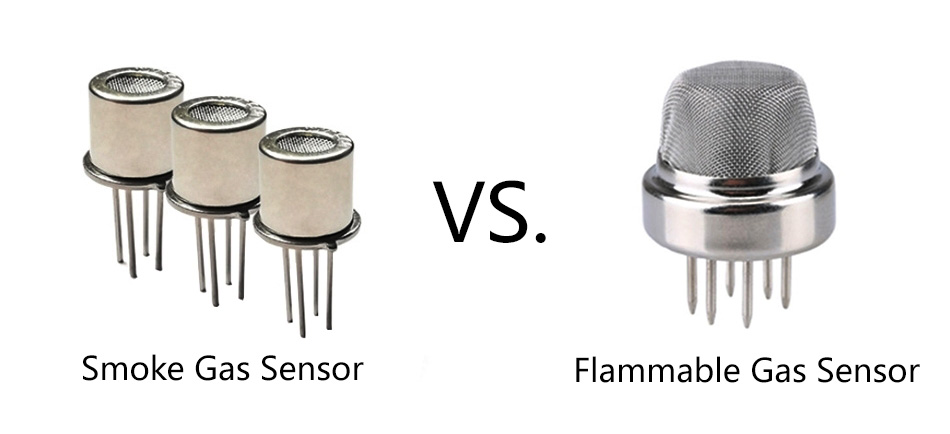Smoke Gas Sensor vs. Flammable Gas Sensor
Smoke gas sensors and flammable gas sensors are two important types of gas sensors that play indispensable roles in modern security systems. Their role is not only to detect different types of gases in the air, but also to play a crucial role in early detection of potential fire hazards or explosion risks. Although they are both related to gases, they have some similarities as well as some differences.
Similarities
Security Enhancement
Both are aimed at enhancing safety by monitoring potential hazardous gases to reduce the risk of fire or explosion.
Application Area
Smoke sensors and flammable gas sensors are widely used in various environments such as homes, commercial buildings, and industrial sites.
Alarm Function
Both have the function of triggering alarms. Once dangerous gas concentrations are detected, they emit sound, light, or other forms of alerts to warn people of potential hazards.

Differences
Detection Target
Smoke sensors are specifically designed to detect smoke particles in the air, usually tiny particles produced by combustion substances. These sensors can quickly detect the presence of smoke and trigger alarms to alert people of potential fire hazards. Flammable gas sensors are used to detect combustible gases in the air, such as natural gas, propane, methane, etc. They prevent fires or explosions by monitoring gas concentrations and emitting alarms when dangerous levels are reached.
Sensitivity and Specificity
Smoke gas sensors are typically very sensitive to smoke particles and can detect tiny changes in smoke concentration. Flammable gas sensors usually have higher specificity, accurately detecting specific types of combustible gases with minimal interference from other gases.
Application Scenario
Smoke gas sensors are widely used in places such as homes, commercial buildings, and public areas where fire risks need to be monitored. They can detect signs of fire early and provide important safety measures. Flammable gas sensors are mainly used in industrial environments, gas pipelines, fire hazard areas, and places where natural gas or liquefied petroleum gas is used in households. These sensors can detect combustible gas leaks in a timely manner and take measures to avoid fires or explosions.
Installation Location and Layout
Smoke sensors are usually installed on ceilings or high walls to ensure timely detection of the path of smoke rising and spreading. Their layout usually takes into account the structure of the building and airflow. The installation location of combustible gas sensors depends on the type and source of gas that may leak. For example, natural gas sensors may be installed near the floor to make it easier to detect natural gas leaks.
Alarm Method
Smoke sensors usually trigger audible alarms or visual indications to alert people of the presence of fires. Some modern smoke sensors can also be connected to smartphones or security systems to send alarm notifications. When combustible gas sensors detect gas leaks, they typically emit audible alarms and may also provide visual indicators or other means to remind users to take appropriate actions.
Response Strategy
Once the smoke sensor detects smoke, it usually activates the evacuation system inside the building and triggers a fire alarm to notify relevant personnel. When a combustible gas sensor detects a combustible gas leak, it may be recommended to turn off the corresponding gas source or notify maintenance personnel for repair and inspection.
In summary, smoke gas sensors and flammable gas sensors operate differently and have different application scenarios in various aspects. Understanding their similarities and differences helps in selecting the right sensor for specific security needs and achieving optimal effectiveness in protecting lives and properties.

